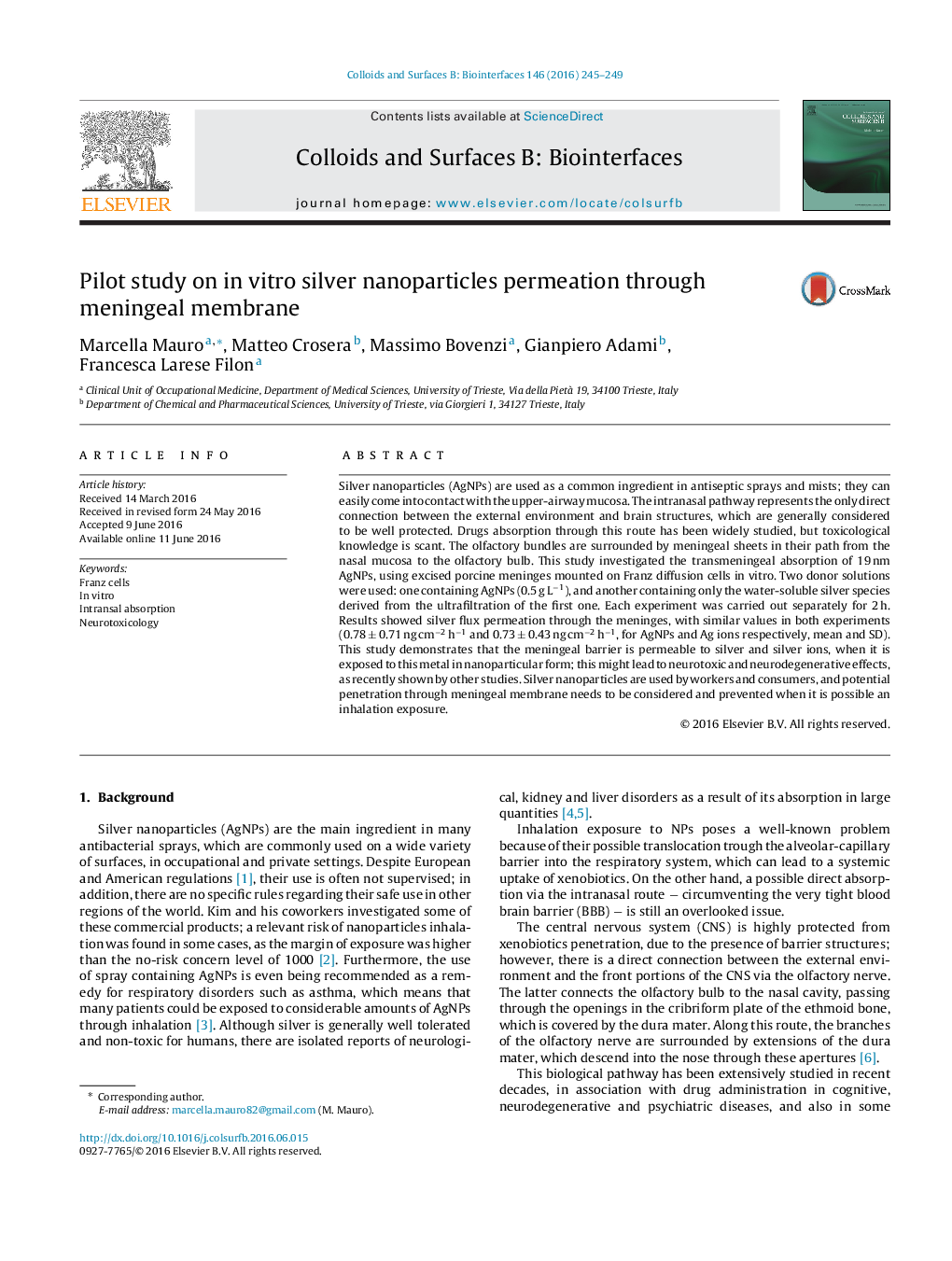| Article ID | Journal | Published Year | Pages | File Type |
|---|---|---|---|---|
| 598748 | Colloids and Surfaces B: Biointerfaces | 2016 | 5 Pages |
•AgNPs are the main ingredient of antiseptical sprays and mists that may come in contact with the upper airways.•No data are currently available as regard potential permeation of AgNPs through the olfactory pathway.•Meningeal membranes permeation properties have been investigated towards AgNPs and silver ions.•Results showed a minimal permeation of the metal in both the form tested.
Silver nanoparticles (AgNPs) are used as a common ingredient in antiseptic sprays and mists; they can easily come into contact with the upper-airway mucosa. The intranasal pathway represents the only direct connection between the external environment and brain structures, which are generally considered to be well protected. Drugs absorption through this route has been widely studied, but toxicological knowledge is scant. The olfactory bundles are surrounded by meningeal sheets in their path from the nasal mucosa to the olfactory bulb. This study investigated the transmeningeal absorption of 19 nm AgNPs, using excised porcine meninges mounted on Franz diffusion cells in vitro. Two donor solutions were used: one containing AgNPs (0.5 g L−1), and another containing only the water-soluble silver species derived from the ultrafiltration of the first one. Each experiment was carried out separately for 2 h. Results showed silver flux permeation through the meninges, with similar values in both experiments (0.78 ± 0.71 ng cm−2 h−1 and 0.73 ± 0.43 ng cm−2 h−1, for AgNPs and Ag ions respectively, mean and SD). This study demonstrates that the meningeal barrier is permeable to silver and silver ions, when it is exposed to this metal in nanoparticular form; this might lead to neurotoxic and neurodegenerative effects, as recently shown by other studies. Silver nanoparticles are used by workers and consumers, and potential penetration through meningeal membrane needs to be considered and prevented when it is possible an inhalation exposure.
Graphical abstractFigure optionsDownload full-size imageDownload as PowerPoint slide
